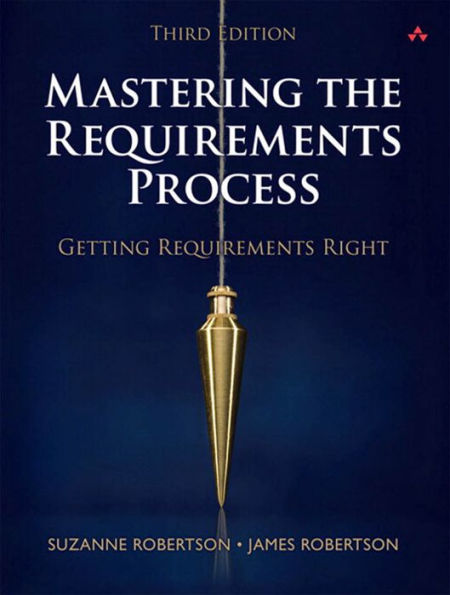“If the purpose is to create one of the best books on requirements yet written, the authors have succeeded.”
—Capers Jones
Software can solve almost any problem. The trick is knowing what the problem is. With about half of all software errors originating in the requirements activity, it is clear that a better understanding of the problem is needed.
Getting the requirements right is crucial if we are to build systems that best meet our needs. We know, beyond doubt, that the right requirements produce an end result that is as innovative and beneficial as it can be, and that system development is both effective and efficient.
Mastering the Requirements Process: Getting Requirements Right, Third Edition, sets out an industry-proven process for gathering and verifying requirements, regardless of whether you work in a traditional or agile development environment. In this sweeping update of the bestselling guide, the authors show how to discover precisely what the customer wants and needs, in the most efficient manner possible.
Features include
- The Volere requirements process for discovering requirements, for use with both traditional and iterative environments
- A specification template that can be used as the basis for your own requirements specifications
- Formality guides that help you funnel your efforts into only the requirements work needed for your particular development environment and project
- How to make requirements testable using fit criteria
- Checklists to help identify stakeholders, users, non-functional requirements, and more
- Methods for reusing requirements and requirements patterns
New features include
- Strategy guides for different environments, including outsourcing
- Strategies for gathering and implementing requirements for iterative releases
- “Thinking above the line” to find the real problem
- How to move from requirements to finding the right solution
- The Brown Cow model for clearer viewpoints of the system
- Using story cards as requirements
- Using the Volere Knowledge Model to help record and communicate requirements
- Fundamental truths about requirements and system development
“If the purpose is to create one of the best books on requirements yet written, the authors have succeeded.”
—Capers Jones
Software can solve almost any problem. The trick is knowing what the problem is. With about half of all software errors originating in the requirements activity, it is clear that a better understanding of the problem is needed.
Getting the requirements right is crucial if we are to build systems that best meet our needs. We know, beyond doubt, that the right requirements produce an end result that is as innovative and beneficial as it can be, and that system development is both effective and efficient.
Mastering the Requirements Process: Getting Requirements Right, Third Edition, sets out an industry-proven process for gathering and verifying requirements, regardless of whether you work in a traditional or agile development environment. In this sweeping update of the bestselling guide, the authors show how to discover precisely what the customer wants and needs, in the most efficient manner possible.
Features include
- The Volere requirements process for discovering requirements, for use with both traditional and iterative environments
- A specification template that can be used as the basis for your own requirements specifications
- Formality guides that help you funnel your efforts into only the requirements work needed for your particular development environment and project
- How to make requirements testable using fit criteria
- Checklists to help identify stakeholders, users, non-functional requirements, and more
- Methods for reusing requirements and requirements patterns
New features include
- Strategy guides for different environments, including outsourcing
- Strategies for gathering and implementing requirements for iterative releases
- “Thinking above the line” to find the real problem
- How to move from requirements to finding the right solution
- The Brown Cow model for clearer viewpoints of the system
- Using story cards as requirements
- Using the Volere Knowledge Model to help record and communicate requirements
- Fundamental truths about requirements and system development

Mastering the Requirements Process: Getting Requirements Right
576
Mastering the Requirements Process: Getting Requirements Right
576eBook
Related collections and offers

Product Details
| ISBN-13: | 9780132942843 |
|---|---|
| Publisher: | Pearson Education |
| Publication date: | 08/06/2012 |
| Sold by: | Barnes & Noble |
| Format: | eBook |
| Pages: | 576 |
| File size: | 19 MB |
| Note: | This product may take a few minutes to download. |
| Age Range: | 18 Years |
